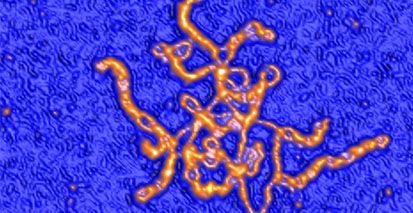Cancer thrives when mutated cells undergo frequent division. Most anti-cancer drugs work by inserting themselves in between the DNA base pairs that encode our genetic information. This process is known as intercalation, and it can result in subtle changes to the DNA molecule’s geometric shape or tertiary structure. These structural changes interfere with the DNA’s transcription and a cell’s replication process, ultimately resulting in cell death.
While intercalating agents used in chemotherapy drugs are highly effective in fighting cancer, they also may kill important cells in the body and lead to other complications such as heart failure. Therefore, researchers are always searching for faster, cheaper and more accurate tools to aid in the design of next-generation anti-cancer drugs with reduced side effects.
A paper published in ACS Nano, one of the top nanotechnology journals in the world, explores this topic. “Modeling and Analysis of Intercalant Effects on Circular DNA Conformation,” (LINK TO http://pubs.acs.org/doi/abs/10.1021/acsnano.6b04876) focuses on the effect of the intercalating agent ethidium bromide (a mimic for many chemotherapy drugs) on the tertiary structure of DNA.










Comments are closed.